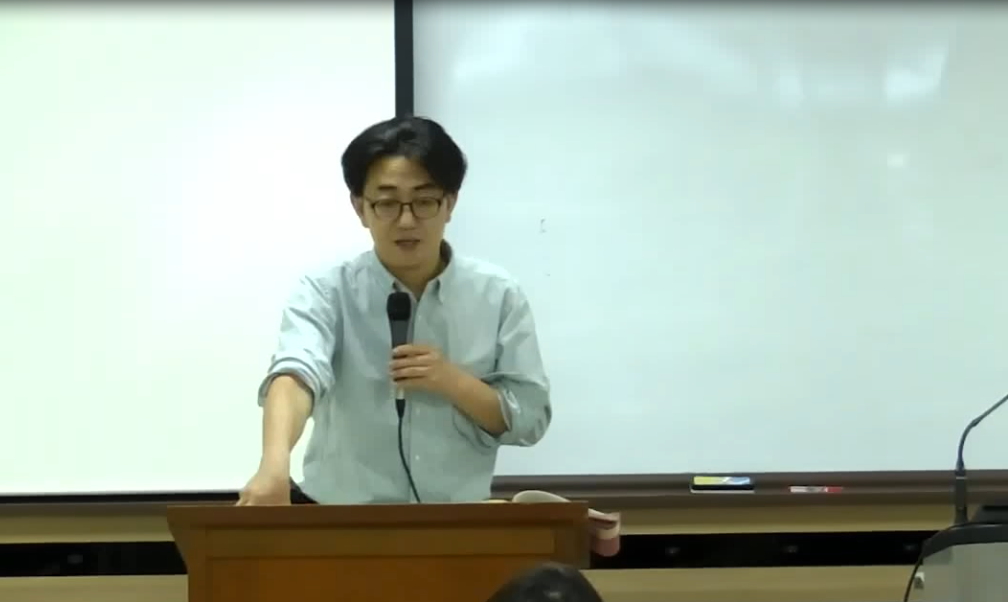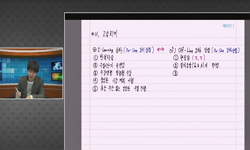2011년 국내에서 발생한 가습기살균제 사고의 원인으로 국가 차원에서 법적인 예방대책의 미흡을 들 수 있다. 저자가 추정한 4 개의 이유 중 하나로서 고분자 화학물질에 대한 위해성 평가자...
http://chineseinput.net/에서 pinyin(병음)방식으로 중국어를 변환할 수 있습니다.
변환된 중국어를 복사하여 사용하시면 됩니다.
- 中文 을 입력하시려면 zhongwen을 입력하시고 space를누르시면됩니다.
- 北京 을 입력하시려면 beijing을 입력하시고 space를 누르시면 됩니다.
https://www.riss.kr/link?id=A101784161
- 저자
- 발행기관
- 학술지명
- 권호사항
-
발행연도
2016
-
작성언어
Korean
-
주제어
가습기살균제 ; 양이온성 고분자 ; 면제 ; 예외조항 ; 국가책임 ; Humidifier disinfectant ; Cationic polymer ; Exemption ; Ineligibility ; Liability
-
KDC
360
-
등재정보
KCI등재
-
자료형태
학술저널
-
수록면
83-99(17쪽)
- DOI식별코드
- 제공처
- 소장기관
-
0
상세조회 -
0
다운로드
부가정보
국문 초록 (Abstract)
그 결과 국내법, 즉 유해화학물질관리법은 신규 고분자 화학물질의 등록 시에 위해성평가를 위한 자료 제출 면제 조치에서 특수한 종류의 고분자 화학물질, 특히 양이온성 고분자 화학물질에 부과하는 예외 조항이 미비되어 있었다. 반면, 미국과 호주에서는 관련법에 이 기술적인 예외조항이 신규 화학물질 등록법이 신설될 당시부터 포함되어 있었던 것으로 나타났다. 따라서, 국내 법이 이와 유사한 조항을 법의 제정 시에 참조하여 포함하였더라면 사고의 예방에 일조하였을 것으로 추정된다. 관련 문헌 검토를 통하여 정부 당국의 관련법 제정의 미비함으로 인한 국민 생명의 손상에 대하여 기업과 별도로 정부가 배상의 책임을 져야 하는 것으로 결론지었다.
그리고, 본 조사를 통하여 발견된 특이한 점은 미국의 독성물질규제법(TSCA)에서 고분자 화학물질의 자료 제출 면제 조치에서 양이온성물질을 예외로 규정한 근저에는 이러한 종류의 화학물질이 생태계의 생물들에게 고독성을 나타낸다는 물질 평가 사례로부터 기인하였는데, 이를 근거로 전반적인 위해성평가가 이루어지는 조처를 취할 수 있게 됨으로써 국민건강의 위해를 예방할 수 있게 된 것이다.
다행하게도 새로 2015년에 시행된 국내의 화평법에는 이러한 예외조항이 마련되어 있다. 그러나, 과학기술적인 세부사항에서 외국과 비교해 볼 때 아직 미흡한 부분이 있으므로 이에 대해서는 기술적인 면에서 재검토하여 개정해 나가야 할 것이다.
2011년 국내에서 발생한 가습기살균제 사고의 원인으로 국가 차원에서 법적인 예방대책의 미흡을 들 수 있다. 저자가 추정한 4 개의 이유 중 하나로서 고분자 화학물질에 대한 위해성 평가자료 제출 면제 조치에서 유래되는 국내법의 문제점을 규명하기 위하여 국내외법을 비교 검토하였다.
그 결과 국내법, 즉 유해화학물질관리법은 신규 고분자 화학물질의 등록 시에 위해성평가를 위한 자료 제출 면제 조치에서 특수한 종류의 고분자 화학물질, 특히 양이온성 고분자 화학물질에 부과하는 예외 조항이 미비되어 있었다. 반면, 미국과 호주에서는 관련법에 이 기술적인 예외조항이 신규 화학물질 등록법이 신설될 당시부터 포함되어 있었던 것으로 나타났다. 따라서, 국내 법이 이와 유사한 조항을 법의 제정 시에 참조하여 포함하였더라면 사고의 예방에 일조하였을 것으로 추정된다. 관련 문헌 검토를 통하여 정부 당국의 관련법 제정의 미비함으로 인한 국민 생명의 손상에 대하여 기업과 별도로 정부가 배상의 책임을 져야 하는 것으로 결론지었다.
그리고, 본 조사를 통하여 발견된 특이한 점은 미국의 독성물질규제법(TSCA)에서 고분자 화학물질의 자료 제출 면제 조치에서 양이온성물질을 예외로 규정한 근저에는 이러한 종류의 화학물질이 생태계의 생물들에게 고독성을 나타낸다는 물질 평가 사례로부터 기인하였는데, 이를 근거로 전반적인 위해성평가가 이루어지는 조처를 취할 수 있게 됨으로써 국민건강의 위해를 예방할 수 있게 된 것이다.
다행하게도 새로 2015년에 시행된 국내의 화평법에는 이러한 예외조항이 마련되어 있다. 그러나, 과학기술적인 세부사항에서 외국과 비교해 볼 때 아직 미흡한 부분이 있으므로 이에 대해서는 기술적인 면에서 재검토하여 개정해 나가야 할 것이다.
다국어 초록 (Multilingual Abstract)
As a result, it was found that the domestic law on Hazardous/Toxic Chemical Control Law of 1991 was lacking the provision on ineligible chemical categories, in this case the cationic polymers, of polymer exemption for the registration of new chemicals. However, the U.S.A. and Australia had provided this ineligibility section in the early stage of the implementation of the law and regulations. Therefore, if the Korean government had adopted the concerned technical part of the regulation through meticulous technical review of the laws and regulations of foreign countries, the fatal incidence of 2011 could have been partially prevented. Through the literature search on the issue, the unpreparedness of the government on this aspect is partially liable for the cost of the victims of the incidence based on the reasoning that the authority was negligent of the effort of preventing the health risk of the citizen, regardless of the responsibility and compensation effort of the concerned industry for the damage.
One peculiar finding through this study was the fact that the ineligibility practice of the Toxic Substances Control Act of the U.S.A. dealing with cationic polymers had originated from the recognition of the specific property of the chemical category being seriously harmful to aquatic organisms through past review processes in the government. It could plainly iterated that the U.S. governments legal provision could have saved numerous citizens life by enactment of laws preserving the ecosystem.
Even if it is late, but we are happy to see that the new Korean Chemical law enacted in 2015 adopted the ineligibility of cationic polymers in the exemption practice for polymeric chemicals. However, the details of the Korean law on this issue still need further to be compared with the ones of foreign countries for technical completeness and be amended.
It is generally speculated that one of the causes of the humidifier disinfectant incidence of Korea in 2011 which sacrificed more than 100 pregnant women and babies was originated from the incompleteness of legal provisions of the government, especial...
It is generally speculated that one of the causes of the humidifier disinfectant incidence of Korea in 2011 which sacrificed more than 100 pregnant women and babies was originated from the incompleteness of legal provisions of the government, especially from the preventive effort at national level. The author pointed out in 2014 in a conference that 4 items were not complete enough to prevent the incidence in the domestic legal system. In this article, focusing on one of the items, a comparison of domestic and foreign laws was taken to elucidate the drawbacks of domestic legal provision on the causative chemicals of concern, especially on the exemption of data requirement for the registration of polymeric chemicals.
As a result, it was found that the domestic law on Hazardous/Toxic Chemical Control Law of 1991 was lacking the provision on ineligible chemical categories, in this case the cationic polymers, of polymer exemption for the registration of new chemicals. However, the U.S.A. and Australia had provided this ineligibility section in the early stage of the implementation of the law and regulations. Therefore, if the Korean government had adopted the concerned technical part of the regulation through meticulous technical review of the laws and regulations of foreign countries, the fatal incidence of 2011 could have been partially prevented. Through the literature search on the issue, the unpreparedness of the government on this aspect is partially liable for the cost of the victims of the incidence based on the reasoning that the authority was negligent of the effort of preventing the health risk of the citizen, regardless of the responsibility and compensation effort of the concerned industry for the damage.
One peculiar finding through this study was the fact that the ineligibility practice of the Toxic Substances Control Act of the U.S.A. dealing with cationic polymers had originated from the recognition of the specific property of the chemical category being seriously harmful to aquatic organisms through past review processes in the government. It could plainly iterated that the U.S. governments legal provision could have saved numerous citizens life by enactment of laws preserving the ecosystem.
Even if it is late, but we are happy to see that the new Korean Chemical law enacted in 2015 adopted the ineligibility of cationic polymers in the exemption practice for polymeric chemicals. However, the details of the Korean law on this issue still need further to be compared with the ones of foreign countries for technical completeness and be amended.
목차 (Table of Contents)
- 〈국문초록〉
- Ⅰ. 서론: 흡입독성 자료 없이 국내 시중에 유통된 구아니딘계 고분자 살균제 성분
- Ⅱ. 사고 원인 화학물질의 국내 등록 및 심사과정 추론
- Ⅲ. 국내외 고분자 화학물질에 대한 관련 규제법
- Ⅳ. 새로 시행된 화평법에서의 고분자 화학물질 관련 법 조항의 검토
- 〈국문초록〉
- Ⅰ. 서론: 흡입독성 자료 없이 국내 시중에 유통된 구아니딘계 고분자 살균제 성분
- Ⅱ. 사고 원인 화학물질의 국내 등록 및 심사과정 추론
- Ⅲ. 국내외 고분자 화학물질에 대한 관련 규제법
- Ⅳ. 새로 시행된 화평법에서의 고분자 화학물질 관련 법 조항의 검토
- Ⅴ. 가습기 살균제 사건의 국가 책임
- Ⅵ. 결론
- 참고문헌
- 〈Abstract〉
동일학술지(권/호) 다른 논문
-
- 강원대학교 비교법학연구소
- 송정은(Song, Jung-Eun)
- 2016
- KCI등재
-
- 강원대학교 비교법학연구소
- 박태현(Park, Tae-Hyun)
- 2016
- KCI등재
-
- 강원대학교 비교법학연구소
- 김하나(Kim, Ha-Na)
- 2016
- KCI등재
-
유전자원 ‘특허’와 WTO TRIPs ‘비차별 주의’에 대한 소고
- 강원대학교 비교법학연구소
- 강지혜(Kang, Ji-Hye)
- 2016
- KCI등재





 DBpia
DBpia







